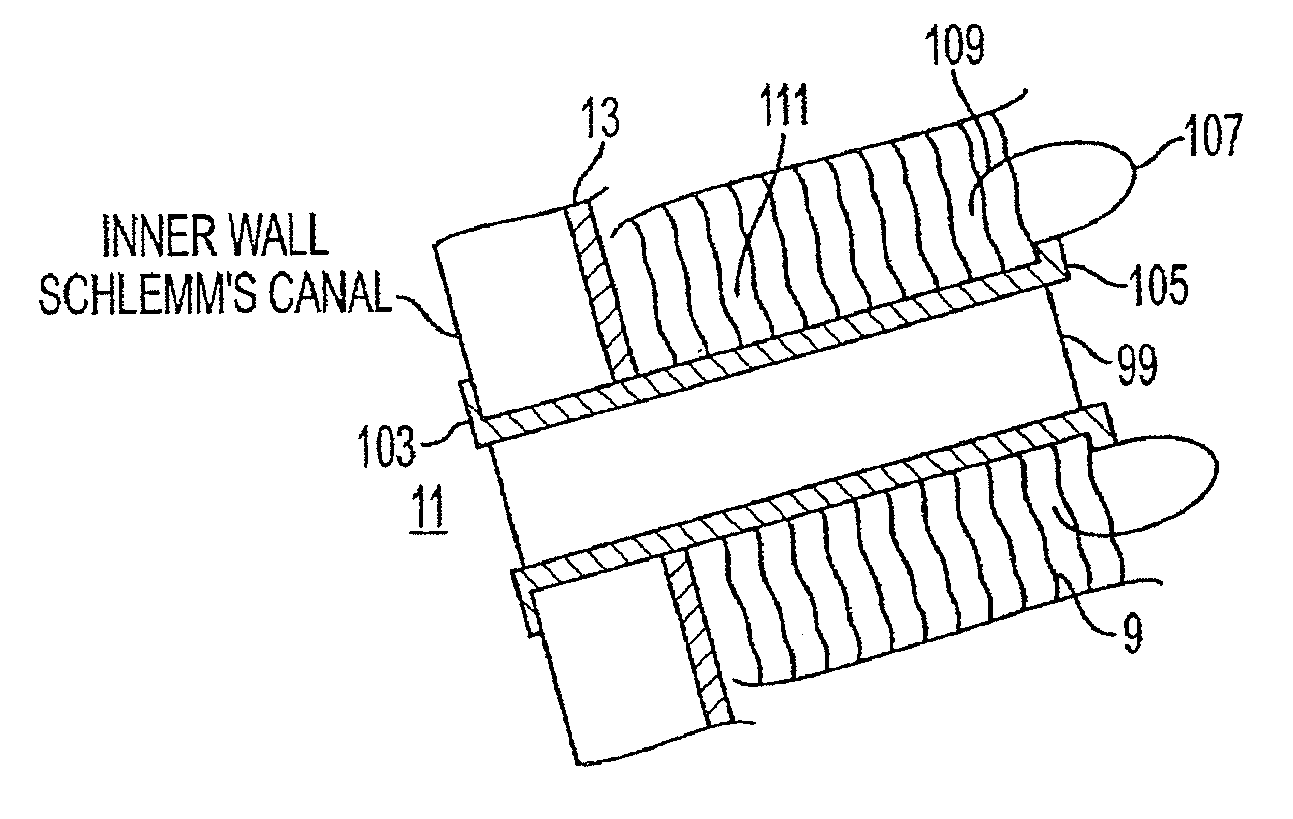Delivery system and method of use for the eye
a delivery system and eye technology, applied in the field of human tissue treatment, can solve the problems of increasing intraocular pressure in the diseased eye, damage to the optic nerve and blindness, and increased intraocular pressure in the eye, so as to improve the treatment of glaucoma, improve fluid flow, and reduce the effect of elevated intraocular pressur
- Summary
- Abstract
- Description
- Claims
- Application Information
AI Technical Summary
Benefits of technology
Problems solved by technology
Method used
Image
Examples
Embodiment Construction
[0040]FIGS. 3-12 illustrate an embodiment of a laser delivery system 21 for micromachining, microscupting, or microshaping the interior anatomy of an eye. As shown in FIG. 4, a laser delivery system 21 may be operated to reduce the thermal component of laser energy contributing to collateral tissue damage. As further shown in FIG. 4, laser delivery system 21 includes a fiber-optic probe 23 for entering the eye and removal or manipulation of eye tissue. Fiber-optic probe 23 is mechanically and electrically coupled to a probe handset 25. Probe handset 25 includes controls for manipulating and operating the fiber-optic probe. A servo device 27 is connected to fiber-optic probe 23 for automatically controlling pressure within the eye during an intraocular procedure. If desired, a motion controller 29 may selectively automate transocular movement of fiber-optic probe 23 into a desired site for tissue removal and / or manipulation. A laser unit 31 provides laser energy in the form of wavele...
PUM
 Login to View More
Login to View More Abstract
Description
Claims
Application Information
 Login to View More
Login to View More - R&D
- Intellectual Property
- Life Sciences
- Materials
- Tech Scout
- Unparalleled Data Quality
- Higher Quality Content
- 60% Fewer Hallucinations
Browse by: Latest US Patents, China's latest patents, Technical Efficacy Thesaurus, Application Domain, Technology Topic, Popular Technical Reports.
© 2025 PatSnap. All rights reserved.Legal|Privacy policy|Modern Slavery Act Transparency Statement|Sitemap|About US| Contact US: help@patsnap.com



